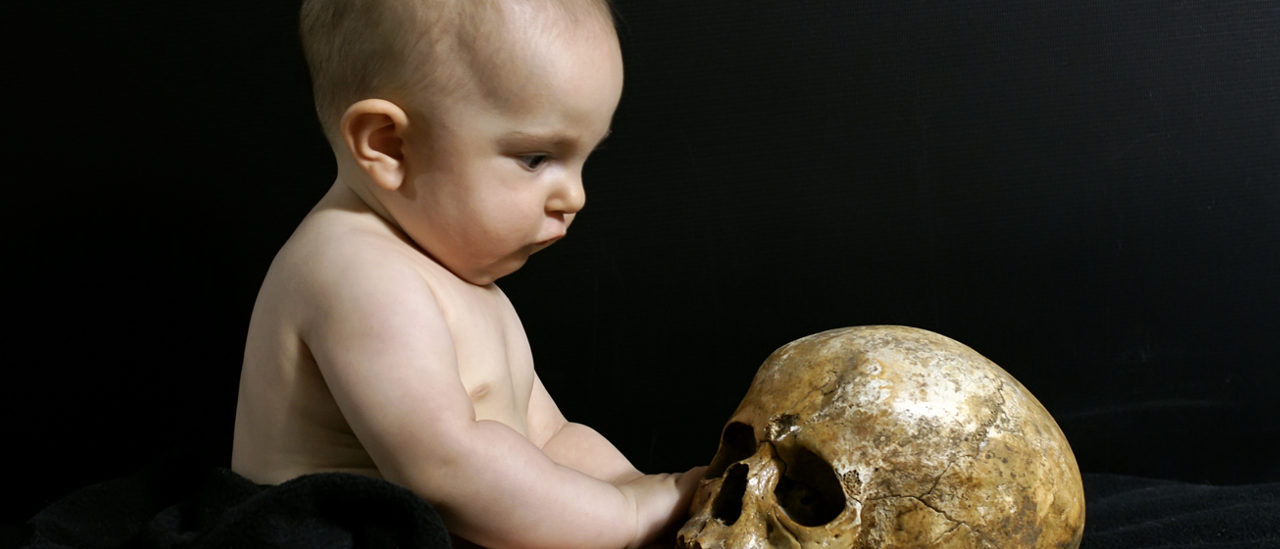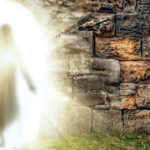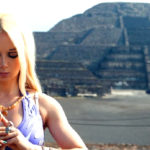Fundamental to many ancient and modern religions, philosophical traditions, and new age thought, is the concept of Death and Rebirth. In Hindu India, for example, the goddess Kali is “uncompromisingly alone, the mother of death… she is the force of time leading ever onward to destruction. And then, when she has destroyed everything, Kali will be the timeless sleep from which new ages will awaken.” [1] Like the Kali Yuga — which derives its name from the Goddess — Kali is the ultimate personification of death and rebirth.
In the world of Gods and Goddesses, Kali is often considered the most terrifying, “the goddess who perpetually transforms life into a fascinating dance of death.” Her bloody rites, however, over-shadow [pardon the pun] her spiritual significance. “As a symbol of the worst we can imagine, as the most extreme picture of our fears, she [Kali] offers us a chance to face down our own terror of annihilation.” In many respects, Kali “is a blissful goddess. Once faced and understood… Kali frees her worshipers of all fear and becomes the greatest of mothers, the most comforting of all goddesses.” [1]
This then is the essence of Death and Rebirth. While the thought of death — annihilation — is unattractive (or terrifying), a problem often arises from the taking out of context the word “death”, when the complete phrase — the essence of Kali — includes the other word, “rebirth”. If death is but a cessation of one’s existence, just prior to creating a second, and perhaps better existence… Then, what’s the problem? Keep in mind that on a day to day level, Sacred Orgasm can be death and rebirth as well! Did you want to give that up?
It’s death AND rebirth. On the grander scale, it’s Reincarnation. On the lesser scale, it’s eliminating from one’s life the no longer beneficial, the no longer relevant, the proverbial baggage we inevitably lug about with us, and then proceeding forthwith to a new set of experiences — invariably better ones. It’s the closing of one door (death) and the sudden discovery of a multitude of new doors (rebirth), which had not been seen — or had been capable of being seen — prior to the closing of the first door.
In the classics, it is the Descent into the Underworld, whereby great heroines and heroes undertake the most difficult of journeys — into the very bowels of Hades. But Hades is known as the place “from which all good things come.” What’s this? Hades? Absolutely!
When the goddess Inanna made her Descent into Hades, she was forced to pass through seven gates, in which she lost her status, her possessions, basically everything she valued, and ultimately her life. But then she is resurrected or reborn and thereafter restored to a much better existence. Her trek, her Hero’s Journey, is the source of the Dance of the Seven Veils — not the Salome version, but the relinquishment of all the baggage and stuff no longer needed — the literal shedding of The Emperor’s New Clothes* — and the return with the golden cornucopia of Hades. This more profound aspect of the Dance of the Seven Veils is in fact beautifully illustrated in Tom Robbin’s Book, Skinny Legs and All [2].
In the world of mere mortals, all of the same applies. Death is letting go of whatever is no longer needed, and thereby allowing for rebirth. From a relationship that is best described as pure Yuk!, to the concept that Money is the root of all happiness, it’s all about stuff and baggage that is no longer needed for our own Hero’s Journey — or more inclusively, The Fool’s Journey. And inevitably, without fail, every time… the rebirth is into someone or something better — or at the very least, something which allows for ever greater growth and evolvement for the individual.
In many respects, life is an evolvement. In the process of Creating Reality, we find all manner of drama with which to entertain ourselves, and learn what not to do next time. If Reincarnation is but the same thing on a longer time scale, then the same philosophy that applies there, applies to the shorter term. The evolvement we unabashedly seek is learning the tools of Sacred Mathematics and Connective Physics, Astrology, Numerology, Tarot, Alchemy, Magic, and Wicca. Thereafter, we get to experience the Secrets and Conspiracies, the Chronicles of Earth, the fundamentals of Justice, Order, and Law (and especially the lack thereof due to Corporate Rule, etceteras), — and thereafter find Laughter in them all. Mostly, life is about gathering material for our comedy act in the afterlife. Death is just the motivation to keep us moving toward new experiences, while Rebirth is what we reap when we let go and go with the flow. A wonderful example is in the introduction of Richard Bach’s Illusions, the Adventures of a Reluctant Messiah [3]. Read it. Consider it homework.
And remember: Life is Death and Rebirth








